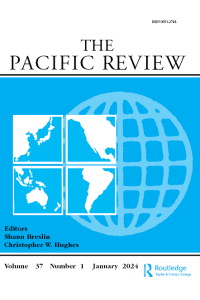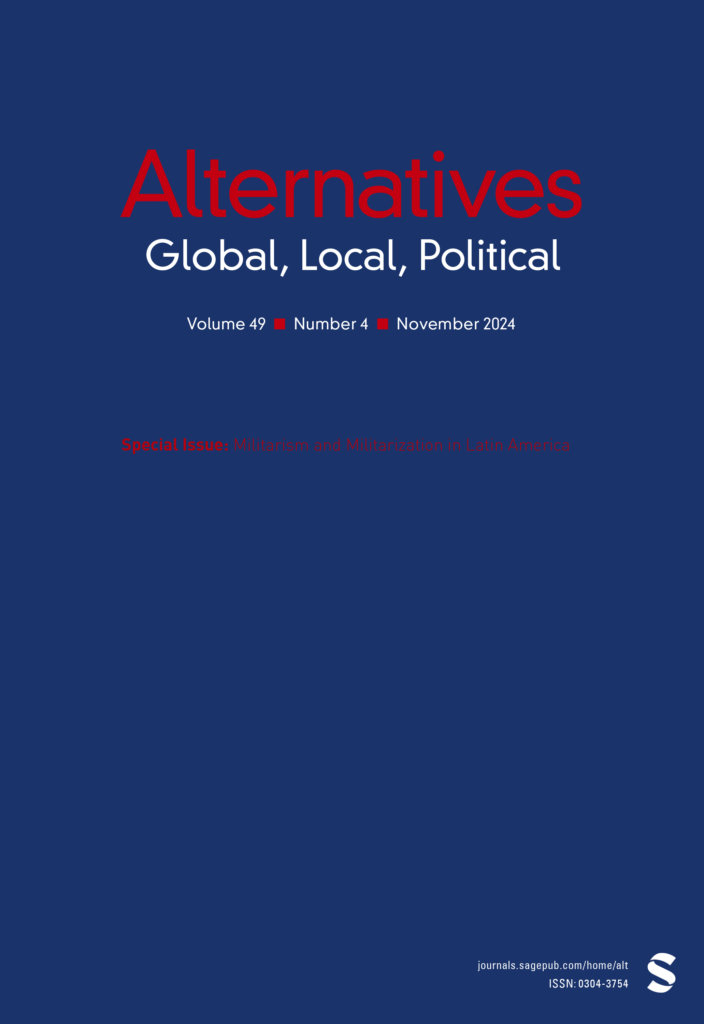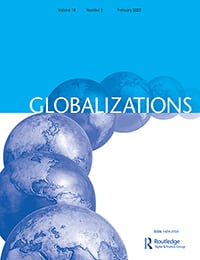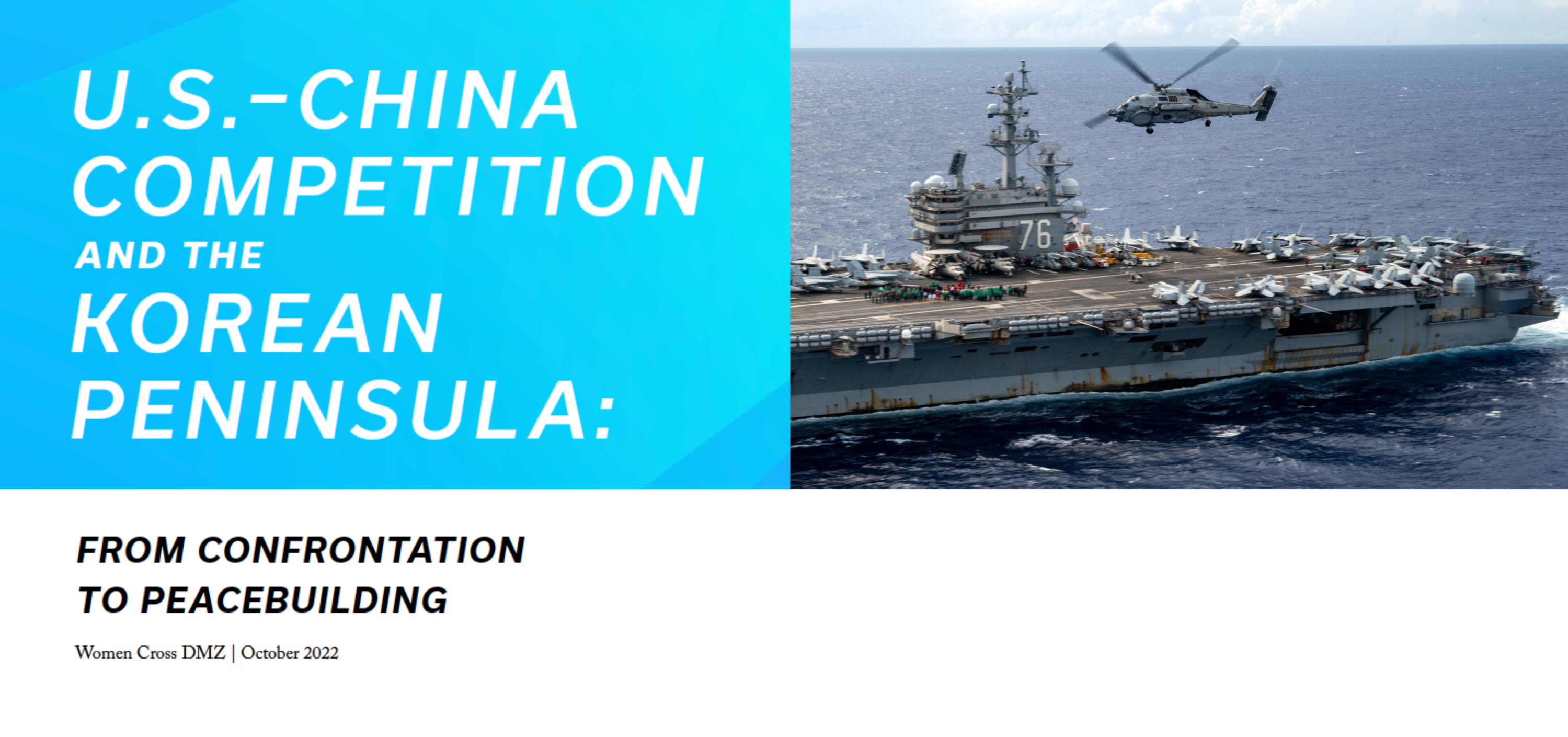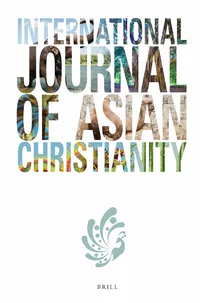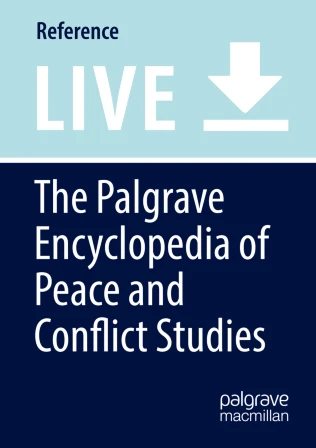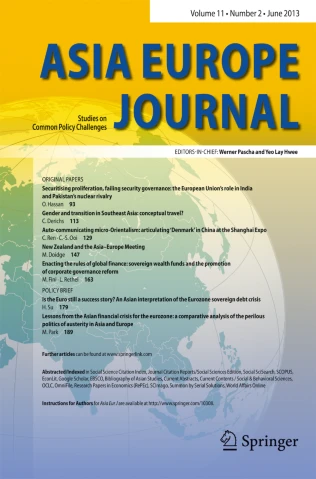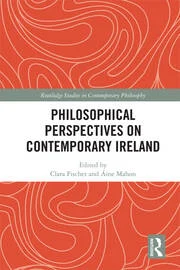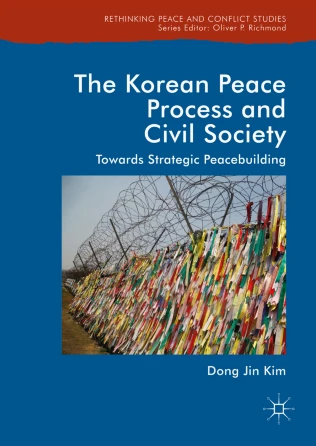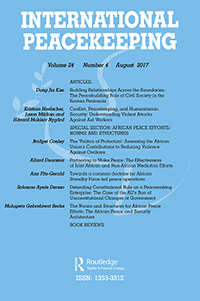Journal Article, 2024
The structural dynamics of the Korean conflict has evolved not only with the inter-Korean rivalry, but also the geopolitics of great power rivalries. The conflict structure was reinforced going through the Korean War and the Cold War. There have been several South Korean initiatives to build peace with North Korea in the post-Cold War era, however the peace process fluctuated due to the escalation of the US-North Korean conflict over the nuclear and missile development of North Korea, and the dispute over North Korea policy in the South Korean society. Building on the sociological understanding of ‘duality of structure’ and the biological insight of ‘niche construction’, this article demonstrates the South Korean potential, as a democratic state, to construct a niche space for its citizens’ peacebuilding with North Korea under the ongoing Korean conflict structure, as well as its limitations in protecting the space before scaling out the disruption of the conflict structure, when governments do not have a clear sense of agency about their policy due to the lack of consensus among its citizens.
Journal Article, 2023
One of the capacities of civil society in peace processes is the promotion of peace-oriented attitudes among citizens through peace education. This article investigates how civil society peace education may be enhanced through collaboration with counterparts in another conflict arena. The article begins by discussing the potential and pitfalls of the comparison of peace/conflict contexts. The empirical findings are based on interviews and focus groups with peace educators in Northern Ireland and South Korea who have engaged in dialogue and partnerships with each other, and they indicate perceived benefits and impact of both the comparative learning to the personnel and the partnership to the organisations. The discussion sets out an ideal model of the peace educative impacts of comparative learning and encounter. Overall, the findings show how local-to-local engagements between peace processes can support the civil society contribution to peacebuilding.
Journal Article, 2022
This article explores lesson sharing between local civil society peacebuilders in the Korean and Northern Ireland peace processes. It presents reciprocal empowerment, a concept primarily utilized in women’s empowerment literature, as a useful conceptual framework to be developed for examining interactions between local civil society peacebuilders who have mutual self-interest to overcome obstacles in top-down peace processes. Recently, historical similarities and concurrences in the peace processes have been increasing the lesson sharing visits between Korean and Northern Irish peacebuilders. Based on the in-depth empirical research on these visits, this article argues that comparative consultations between peace processes would not only generate useful lessons for each context, but also empower local peacebuilders, civil society in particular, provided the comparisons and interactions are reciprocal, not unidirectional or hierarchical. In this sense, this article contributes to the conceptual and practical discussions of every day, emancipatory peacebuilding.
Report, 2022
U.S.-China Competition and the Korean Peninsula: From Confrontation to Peacebuilding shows how the Korean Peninsula has become the fault line for rising U.S.-China tensions. Released by Women Cross DMZ, the report argues that peacebuilding in Korea offers a much-needed opportunity for U.S.-China cooperation, which would help to reduce tensions, build trust, and, most crucially, avoid a possible war.
Journal Article, 2021
Informed by the resource mobilisation theory, this article conducts a case study on Christianity in Korea, in order to explore the nexus between religion and social movements, and how this nexus could contribute to peace, rather than violence. Given its geopolitical dimensions, involving nuclear weapons and the legacy of the Cold War, the role of religion in the Korean conflict has been under-researched. Nonetheless, Christianity has influenced the Korean conflict, with its association with anticommunism, as well as with peace movements. This article argues that Christian ecumenical organisations in the context of the Korean conflict utilised their social resources for peace and reconciliation, when they rediscovered the just peace tradition in Christianity. This article contributes to theoretical and practical discussions surrounding religion, war, and peace, by conceptualising just peace in the Christian tradition, and by adding empirical substance to the nexus between ecumenism and social movement for just peace.
Report,2021
An International Working Group on Individuals and Communities in Transition
Communities and individuals across the world are in varying states of transition from violence to peace.
While the character of violence might differ, from paramilitarism and criminal gangs to civil war and
genocide, societies moving toward peace share similar challenges. As such, the lessons gleaned from one
context are informative for others, though these lessons are rarely shared, as scholars and practitioners
tend to work within their given case, theoretical framework, or methodology. To help bridge these divides,
a collective learning platform was designed, bringing together individuals working on moving communities
and individuals from violence to peace around the world. Though the participants discussed research and
practice from highly diverse contexts, including Colombia, Northern Ireland, the Korean Peninsula, Rwanda,
and Yemen, several overlapping themes emerged. This executive summary synthesizes these key themes,
providing a high-level summary of the collective learning that took place within the platform.
Book Chapter, 2020
The Korean peacebuilding case study has not been drawing substantial attention in peace and conflict studies scholarship. Given its extensive geopolitical dimensions, involving the Cold War legacy and nuclear weapons, it appears to be better suited for the field of international relations. However, there have been several South Korean civil society groups who built relationships with people in North Korea across the Demilitarized Zone, and promoted civic values for peace, in order to overcome the fragile armistice situation and build a sustainable peace on the Korean peninsula. Exploring the role of Korean civil society is expected to narrow the gaps in the Korean peace process, both in terms of knowledge and practice, and to add significant empirical substance to discussions in peace and conflict…
Journal Article, 2020
This article explores the challenges and contributions of women in building and sustaining peace in protracted conflicts by conducting a comparative case study on Northern Ireland and Korea. Similarities in the histories of the conflicts and the concurrences in the peace processes have been attracting policy makers and researchers to share lessons between the Northern Ireland and Korean peace processes. However, the peacebuilding role of women and their transversal perspective have not yet received significant attention compared to the high-level agreements, signed predominantly by male politicians. This article identifies the similarities in the peacebuilding activities of women in Northern Ireland and Korea, in terms of their recognition of the interconnection between identity politics and patriarchy, building relationships across the divide through transversal dialogue, and initiating nonviolent peace movements against the militarism of their societies. The comparative case study also shows dissimilarities between the two cases, with regard to the freedom of women to move beyond boundaries, and being part of the official peace process. This article concludes the role of women in both contexts is a key element in sustainable peacebuilding; however, it appears that women’s peacebuilding would not be able to reach its full potential to break down violent structures in conflict-affected societies, as long as their transversal perspective remains at the level of social movement, not part of peacebuilding at all levels of societies, including high-level negotiations.
Book Chapter, 2020
Northern Ireland provides an illuminating example of the role of civil society in promoting non-violent responses to a protracted conflict involving both explicit political violence and structural injustices embedded in political institutions. This chapter examines non-violence as a distinctive category of political action that helps us understand the impact of civil society groups on peace and conflict in Northern Ireland, from the period known as “the Troubles” (1968–1998) to the challenges resulting from the Good Friday Agreement of 1998. It suggests that the impact of non-violent political action in Northern Ireland was limited by at least three factors: 1) tensions between civil resistance, political violence, and constitutional politics; 2) strategic ambiguity concerning the objectives of non-violent campaigns; and 3) the use of only a limited range of the methods of non-violent political action. Furthermore, the role of civil society evolved from one of direct confrontation with the state to a focus on community divisions and political dialogue. This was in response to escalating levels of violence and the intensification of sectarian divisions during the Troubles, but also reduced the capacity of civil society to operate independently using the methods of non-violent political action and civil resistance.
Book, 2019
Towards Strategic Peacebuilding
The Post-Cold War era witnessed a dramatic rise in breakthroughs for peace processes, including the Korean peninsula, between parties mired in protracted conflict. However, many such processes broke down within a short period of time. This book explores the possibilities for comprehensive and sustainable peacebuilding strategy in the Korean peace process, beyond reaching an agreement, by reviewing diverse peacebuilding activities from government and civil society.
Journal Article, 2017
The Peacebuilding Role of Civil Society in the Korean Peninsula
The expectations for the role of civil society are growing due to an abysmal record of high-level political leadership in reaching an agreement and a sustainable peace process. How much impact can civil society have and what roles can it take in the peace process? This case study of South Korean civil society shows how the civil society was able to bridge the horizontal and vertical boundaries of the Korean conflict with the support of a global civil society, and created a hospitable public atmosphere for the peace process in the 1980s and 1990s. However, the space for the civil society to make a contribution in the Korean peace process required the interdependency of the roles of high-level and civil-society leadership in the interplay between the international and domestic political environments. The peacebuilding role of South Korean civil society demonstrates that the horizontal capacity of civil society alone cannot guarantee a breakthrough and sustainability in a peace process, but if it is coordinated with the vertical capacity, civil-society peacebuilding can be a useful platform for sustainable peacebuilding.

